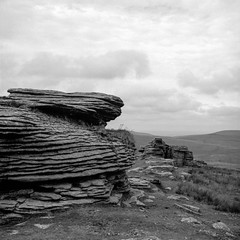Bug Fashion
nathascha
In the early part of the 19th century a gentleman named Arthur Wellesley went to his bootmaker (Hoby of St. James’ Street, London) with a request. A recently retired military man, Wellesley wanted to have his Hessian cavalry boots modified for civilian wear. The boots, made popular by the recklessly brave light cavalry troops who served under Wellesley during the Penisular campaign in Spain, were wonderfully practical; they were calf-high with a semi-pointed toe which allowed them to slip easily into stirrups and a low heel that made them pleasant for walking. But like all riding boots, they were designed to be tight. Wellesley asked his bootmaker to cut them more loosely so they’d be easy to slip on and off.
Arthur Wellesley, as a reward for his many victories against Napoleon in Spain, had been granted the title of Duke of Wellington. His title also passed onto his boots. The original Wellington boots, made of soft leather, became fashionable and remained so for half a century. By wonderful coincidence, the boots went out of fashion around the same time Charles Goodyear invented the process for creating rubber. Goodyear sold a limited patent for the process to Hiram Hutchinson, an American living in France, giving him the right to manufacture rubber footwear. Hutchinson’s first product was created with farmers in mind and patterned after Wellington’s popular boots.
From the green battlefields of 19th century Europe, to the barns and fields of farmers worldwide, to the asphalt parking lots of Canada. These boots have come a long way on a strange trip, and I doubt the trip will end anytime soon.
Blog photograph copyrighted to the photographer and used with permission by utata.org. All photographs used on utata.org are stored on flickr.com and are obtained via the flickr API. Text is copyrighted to the author, greg fallis and is used with permission by utata.org. Please see Show and Share Your Work








